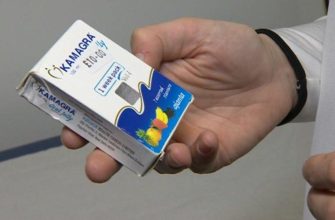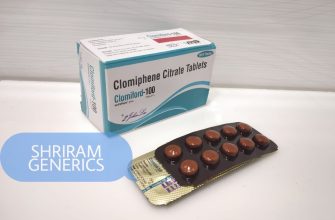Before you initiate Vivitrol treatment, perform a naltrexone challenge test. This crucial step verifies that a person is completely opioid-free, preventing severe withdrawal symptoms upon receiving the first Vivitrol injection. Administer a small, oral dose of naltrexone (typically 0.5 mg initially, increasing to 50 mg over a day or two) and closely monitor for signs of opioid withdrawal, such as nausea, vomiting, anxiety, or muscle aches. A negative challenge – meaning no significant withdrawal symptoms appear – confirms opioid clearance and indicates safety for Vivitrol.
You might ask, why not simply rely on a urine drug screen (UDS)? While UDS offers valuable information, it has limitations. UDS detects the presence of opioids within a specific timeframe, but it doesn’t guarantee complete receptor clearance. People may metabolize opioids at different rates, and lingering trace amounts can still trigger a precipitated withdrawal. A naltrexone challenge proactively assesses the actual state of opioid receptors, giving you a more complete understanding of the person’s readiness for Vivitrol. Consider it a proactive safety measure, rather than solely relying on a potentially misleading UDS result.
The duration of observed opioid abstinence significantly impacts the challenge’s predictive value. If a person self-reports a week of abstinence and passes a UDS, a naltrexone challenge still adds value. Even with this apparent clearance, subtle receptor binding could exist. Conversely, if a person has been abstinent for a month, confirmed by multiple UDS tests, some clinicians might debate the absolute necessity of a challenge. However, the benefits generally outweigh the risks, especially given the potentially severe consequences of precipitated withdrawal. Implement a clear protocol that balances individual circumstances with standardized safety practices.
- Naltrexone Challenge Before Vivitrol: A Comprehensive Guide
- Understanding Naltrexone’s Role
- What to Expect During a Naltrexone Challenge
- Key Considerations
- Why a Challenge Dose is Necessary
- Challenge Dosage and Administration
- Monitoring After Administration
- Interpreting Challenge Results
- Recognizing Potential Withdrawal Symptoms
- Common Withdrawal Symptoms
- Severity Assessment and Communication
- Interpreting the Challenge Test Results
- Understanding Withdrawal Symptoms
- False Negatives and Further Steps
- Managing Withdrawal Symptoms if They Occur
- Non-Pharmacological Strategies
- When to Seek Medical Advice
- Alternative Testing Options
- Micro-Dose Naltrexone Introduction
- Opioid Risk Stratification Tools
- When to Proceed with Vivitrol Injection
Naltrexone Challenge Before Vivitrol: A Comprehensive Guide
To determine if you can safely begin Vivitrol treatment, you must first complete a Naltrexone challenge. This test verifies that you are opioid-free and won’t experience severe withdrawal symptoms upon receiving Vivitrol.
Before the challenge, you must abstain from all opioids (including prescription painkillers, heroin, and codeine) for a minimum of 7-10 days. This timeframe ensures that opioids have cleared your system, minimizing the risk of precipitated withdrawal.
The Naltrexone challenge involves administering a small dose of oral Naltrexone, typically 25-50mg. A healthcare professional will then closely monitor you for at least one hour for any signs of opioid withdrawal. Common withdrawal symptoms include nausea, vomiting, sweating, anxiety, muscle aches, and diarrhea.
If you experience no withdrawal symptoms during the observation period, the Naltrexone challenge is considered negative. This signifies you are likely opioid-free and can safely receive a Vivitrol injection. Your doctor can then schedule your Vivitrol injection, usually within 1-3 days of a successful challenge.
If you experience significant withdrawal symptoms during the Naltrexone challenge, it indicates opioids are still present in your system. Your doctor will postpone Vivitrol initiation and advise you on extending your opioid-free period, followed by a repeat Naltrexone challenge.
Always inform your healthcare provider about any medications or substances you are taking before undergoing a Naltrexone challenge. Certain medications can interact with Naltrexone or mask withdrawal symptoms, potentially leading to inaccurate results.
Consider contacting a support group or addiction specialist if you are struggling with opioid abstinence. They can provide guidance and resources to increase your chances of a successful Naltrexone challenge and Vivitrol treatment.
Understanding Naltrexone’s Role
Naltrexone blocks opioid receptors in your brain, stopping opioids from having any effect. This action significantly reduces cravings for opioids and alcohol. Taking naltrexone means that if you use opioids, you won’t feel their usual high. It’s crucial to remember that naltrexone does not eliminate withdrawal symptoms. If you stop using opioids, you will still experience the discomforts of withdrawal, even while on naltrexone.
The naltrexone challenge confirms that no opioids are currently in your system before starting Vivitrol, which is an extended-release injectable form of naltrexone. The challenge involves administering a small dose of oral naltrexone and carefully monitoring for signs of opioid withdrawal. If withdrawal symptoms appear, it indicates that opioids are still present, and starting Vivitrol could cause severe withdrawal.
What to Expect During a Naltrexone Challenge
During the challenge, medical professionals will observe you closely for up to an hour after you take the oral naltrexone. They look for symptoms like yawning, sweating, goosebumps, nausea, vomiting, diarrhea, anxiety, and muscle aches. You’ll need to honestly report how you’re feeling. If you pass the challenge, meaning no significant withdrawal symptoms are present, you can then safely begin Vivitrol treatment. This step is vital to avoid precipitated withdrawal, a sudden and intense onset of withdrawal symptoms.
Key Considerations
Be open with your medical team regarding your substance use history. Inform them of all medications you are taking, including over-the-counter drugs and supplements. Knowing this information helps them safely conduct the naltrexone challenge and manage any potential risks. If you have liver or kidney issues, inform your physician. They’ll need to carefully assess if naltrexone is a good choice for you.
Why a Challenge Dose is Necessary
You need a naltrexone challenge before Vivitrol to confirm you’re opioid-free. This test makes sure you won’t experience precipitated withdrawal when you receive the Vivitrol injection.
- Confirms Opioid Absence: Naltrexone binds to opioid receptors. If opioids are present, it triggers withdrawal symptoms.
- Prevents Severe Discomfort: Vivitrol’s effects can be intense. We want to avoid a sudden, severe withdrawal reaction that can occur if opioids are still in your system.
- Ensures Treatment Safety: Patient safety is the highest priority. A challenge helps ensure that Vivitrol can be administered safely and comfortably.
Typically, the challenge involves taking a small dose of oral naltrexone. A healthcare professional will monitor you for any withdrawal signs for at least one hour.
Following a successful challenge, you demonstrate you’re opioid-free. Only then can you proceed with the Vivitrol injection, paving the way for a safer, more comfortable start to your recovery.
Challenge Dosage and Administration
Administer naltrexone hydrochloride at a test dose of 0.5 mg intramuscularly or intravenously. Observe the individual closely for 60 minutes after injection. This initial low dose allows for early detection of adverse reactions.
Monitoring After Administration
Closely monitor for signs of opioid withdrawal, such as changes in vital signs (heart rate, blood pressure, temperature), pupillary dilation, lacrimation, rhinorrhea, diaphoresis, nausea, vomiting, anxiety, or agitation. Document all observations meticulously.
Interpreting Challenge Results
Absence of withdrawal signs typically indicates opioid-free status and suitability for Vivitrol. However, proceed cautiously if uncertainty exists. Should withdrawal signs develop, manage symptoms supportively and postpone Vivitrol initiation until the individual is opioid-free and comfortable. Consider repeating the challenge with an even lower dose if you suspect heightened sensitivity. Always prioritize patient safety during this procedure.
Recognizing Potential Withdrawal Symptoms
Actively monitor yourself for withdrawal symptoms following the naltrexone challenge, as these indicate opioid dependence and can influence the decision to proceed with Vivitrol. Expect symptoms to appear within 30-60 minutes of naltrexone administration, although the onset and intensity vary.
Common Withdrawal Symptoms
Prioritize tracking these common symptoms:
| Symptom | Description | Action |
|---|---|---|
| Muscle aches | Pain or cramping, especially in the legs or back. | Note the severity and location. Consider mild pain relief if approved by your doctor. |
| Sweating | Excessive perspiration, often accompanied by chills. | Stay hydrated and track the frequency. |
| Nausea or vomiting | Feeling sick to your stomach or actively throwing up. | Report any vomiting to your doctor. Sip clear fluids. |
| Runny nose or tearing | Increased nasal discharge or watery eyes. | Keep tissues handy. |
| Goosebumps | Small bumps on the skin caused by muscle contractions. | Note the duration and occurrence. |
| Dilated pupils | Enlarged pupils, making the colored part of the eye appear smaller. | Use a mirror to check pupil size in a well-lit room. |
Severity Assessment and Communication
Rate each symptom on a scale of 1 to 10, where 1 represents minimal discomfort and 10 represents the worst imaginable experience. Promptly contact your healthcare provider if you experience severe symptoms (7 or higher on the scale), or if you have concerns about your reaction. They can advise on appropriate management and assess your suitability for Vivitrol.
Interpreting the Challenge Test Results
Consider Vivitrol administration only if the naltrexone challenge yields negative results. This means you see no withdrawal symptoms within one hour after receiving the naltrexone injection or taking the pill orally. If you observe withdrawal symptoms, it signals opioid presence in your system. Delay Vivitrol administration until you are opioid-free to prevent a severe withdrawal event. Note: a negative challenge does not guarantee the absence of precipitated withdrawal, particularly with very long-acting opioids like methadone or buprenorphine.
Understanding Withdrawal Symptoms
Pay close attention to both objective and subjective signs of withdrawal. Objective signs include elevated heart rate (over 100 bpm), increased blood pressure (systolic over 140 mmHg), sweating, goosebumps, dilated pupils, tremors, vomiting, and diarrhea. Subjective signs include anxiety, restlessness, muscle aches, yawning, tearing, and stomach cramps. Even mild symptoms suggest opioid presence, warranting delayed Vivitrol initiation.
False Negatives and Further Steps
False negative challenge tests occur. This is more frequent after recent use of partial agonists like buprenorphine. If suspicion of opioid use remains despite a negative challenge, consider these steps: Extend the observation period beyond one hour, use a urine drug screen, or perform a naloxone challenge (which typically produces a more robust response than naltrexone). Discuss all concerns with the patient and adjust your approach based on the individual situation. Quantifying buprenorphine in urine or blood samples is sometimes helpful in cases of suspected use of partial agonists, but keep in mind that levels decline slowly and may be detectable for several days.
Managing Withdrawal Symptoms if They Occur
Combat mild withdrawal symptoms following the naltrexone challenge with supportive care. Hydrate frequently by drinking plenty of water or electrolyte-rich beverages like sports drinks or coconut water. This replenishes fluids lost due to potential nausea or vomiting.
Address gastrointestinal upset with over-the-counter medications. Loperamide (Imodium) can help manage diarrhea, while dimenhydrinate (Dramamine) can ease nausea. Follow dosage instructions on the packaging carefully.
Non-Pharmacological Strategies
Try these approaches to manage withdrawal symptoms without medications. Engage in light physical activity, such as walking, to release endorphins and improve mood. Practice relaxation techniques like deep breathing exercises or meditation to reduce anxiety and promote calmness. Distract yourself with enjoyable activities, such as reading, watching movies, or spending time with loved ones, to shift your focus away from uncomfortable symptoms.
When to Seek Medical Advice
Consult a healthcare professional if you experience severe withdrawal symptoms. Seek immediate medical attention if you have persistent vomiting, dehydration, severe abdominal pain, or any signs of an allergic reaction. They can assess your condition and provide appropriate medical treatment, possibly including intravenous fluids or other medications to manage the symptoms. Additionally, they can offer guidance on how to proceed safely with Vivitrol treatment after stabilizing your health.
Alternative Testing Options
Consider urine drug screens (UDS) with decreasing frequency prior to Vivitrol initiation. Instead of a naltrexone challenge, consistent negative UDS can indicate opioid abstinence. Discuss this approach with the prescribing physician to determine an appropriate testing schedule, typically spanning 7-14 days before the injection.
Use quantitative urine drug testing. This provides specific opioid concentration levels. Declining opioid levels over consecutive tests can substitute for the naltrexone challenge. Consult a toxicology laboratory about available quantitative assays and result interpretation.
Micro-Dose Naltrexone Introduction
Slowly introduce naltrexone at very low doses (0.1-1mg). Watch for any withdrawal symptoms. Titrate the dose upwards incrementally every 24-48 hours. If no withdrawal occurs at a low maintenance dose (e.g., 6mg), proceed with the Vivitrol injection. This method minimizes discomfort and evaluates patient response carefully.
Opioid Risk Stratification Tools
Employ validated risk assessment tools like the Opioid Risk Tool (ORT) or the Screening, Brief Intervention, and Referral to Treatment (SBIRT). Use these tools to assess withdrawal risk based on opioid history and behavior. Lower risk scores suggest readiness for Vivitrol without a standard challenge. Consider these aspects:
- ORT assesses risk for opioid misuse based on genetics, psychiatric history, and substance use history.
- SBIRT identifies individuals at risk for substance use disorders and connects them with appropriate care.
Communicate closely with the patient. Open dialogue regarding their opioid usage and withdrawal experience can help determine the need for a naltrexone challenge. Patient self-reporting, supplemented with objective testing, aids in a shared decision-making process.
When to Proceed with Vivitrol Injection
Proceed with the Vivitrol injection only after the Naltrexone challenge confirms opioid withdrawal is absent. Ensure the patient remains opioid-free for a minimum of 7-14 days, verified through urine drug screens, before scheduling the injection. Administer the Naltrexone challenge (typically 0.5-1.0 mg subcutaneously or intravenously) and closely monitor the patient for one hour. Observe for signs like pupillary dilation, gooseflesh, runny nose, tearing, tremor, or subjective reports of withdrawal symptoms. If any withdrawal signs appear, postpone the Vivitrol injection.
Confirm the patient’s commitment to abstinence and understanding of Vivitrol’s purpose before proceeding. Discuss potential side effects, like injection site reactions or nausea, and strategies to manage them. Address any outstanding questions or concerns the patient may have. Review the risks of attempting to override the Vivitrol blockade with large doses of opioids, which can lead to severe respiratory depression and death.
Document the negative Naltrexone challenge result, the opioid-free period verification, patient education, and informed consent in the patient’s medical record. Consider administering the first Vivitrol injection under direct observation, especially if there are concerns about adherence or risk of relapse. Schedule follow-up appointments to monitor progress, manage any side effects, and provide ongoing support.






